Aubrey’s ear was sitting on a table, perfectly proportioned but just slightly the wrong color. It was the final step of what had been a painstaking process, and the ten-year-old girl—sitting patiently in an examination chair—waited as Robert Barron dabbed a whisker-thin brush onto a palette, swept the tiny bristles across the appendage, and blended the pigment to just the right hue. “I’ve mastered the technique,” he said, “of making silicone look like skin.”
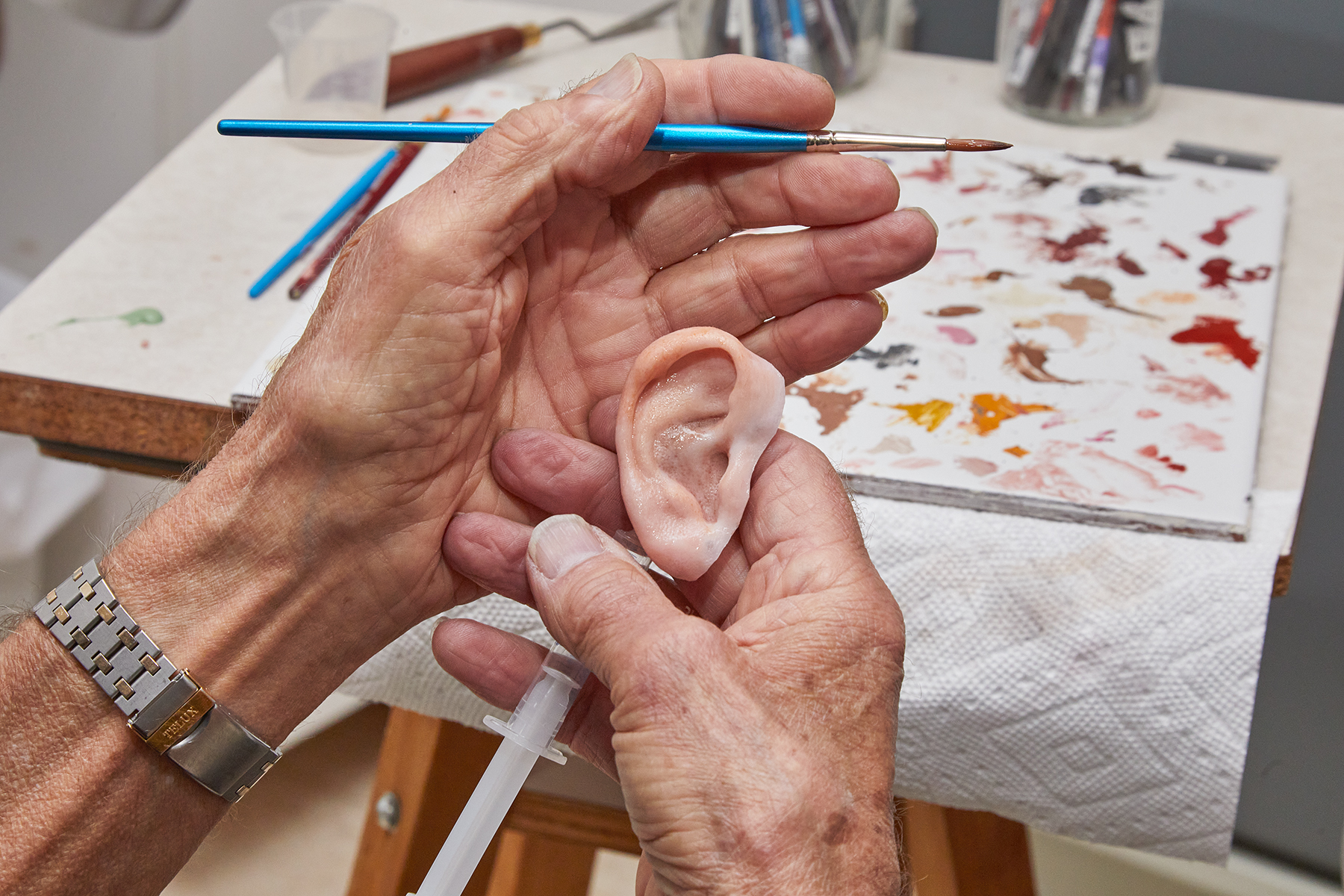
Barron is a master craftsman of custom-made prostheses, and Aubrey had come to his Ashburn lab to be fitted with the artificial right ear that would soon be virtually indistinguishable from her left. Satisfied with the shading, Barron pressed the prosthesis against the side of his patient’s head, just above her jawline, and held it there until the adhesive stuck. He then craned his neck to examine his work.
“Voilà,” he said.
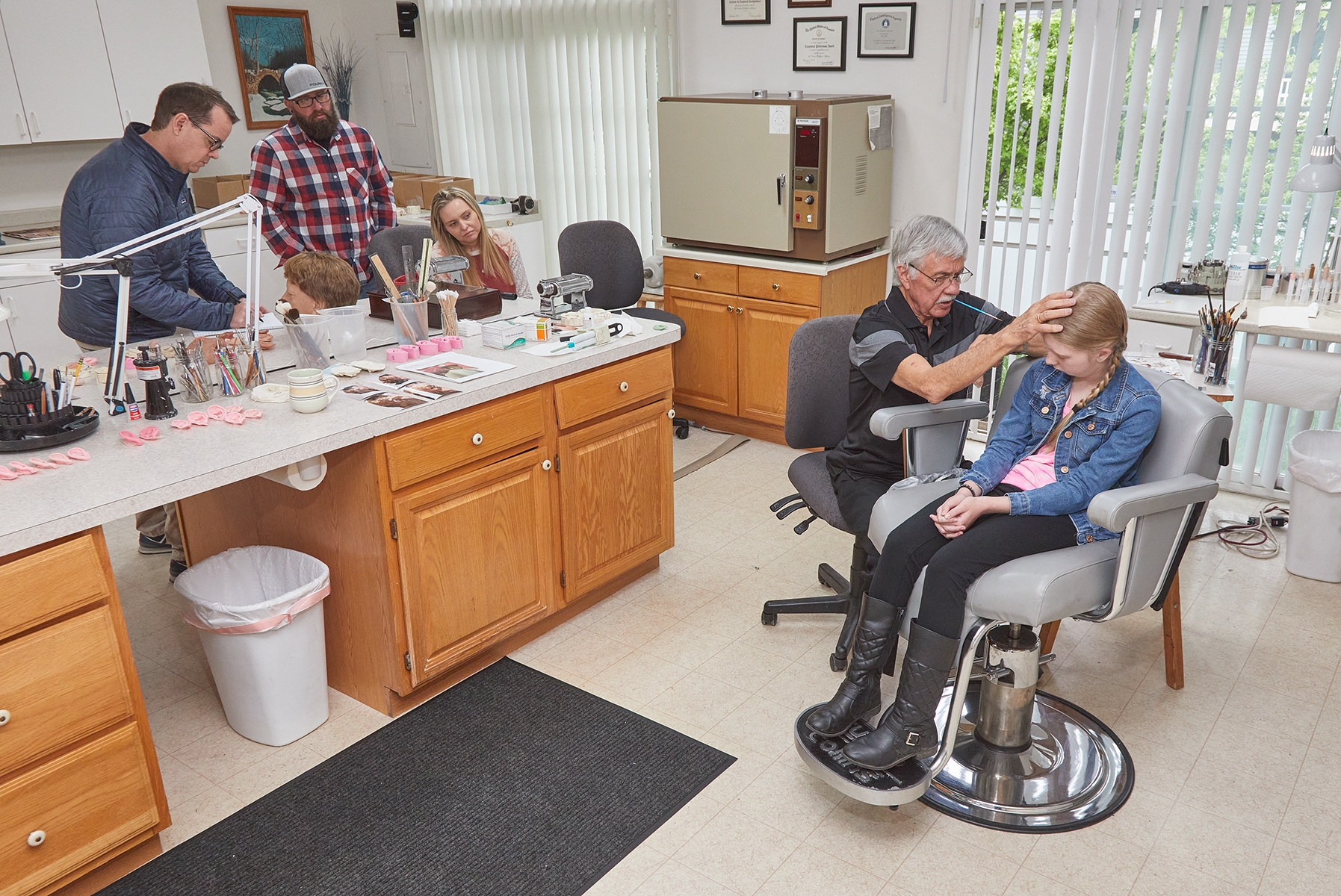
Aubrey looked up and smiled nervously. She had found her way to Barron via the same journey of heartache and hope that most of his clients take. Over nearly three decades, Barron has helped a long list of people whose appearance has been affected by injury or disease: cancer patients, burn victims, veterans hurt in combat, and many others. The congenital ear deformity that Aubrey was born with, microtia, had been exacerbated by unsuccessful reconstructive surgery in 2018—an experience so traumatic that she refused to undergo additional procedures. Aubrey’s parents then found out about Barron’s company, Custom Prosthetic Designs, and learned there was a nonsurgical resolution to Aubrey’s despair. Over the next several months, the family watched as Barron took molds of both of Aubrey’s ears in order to craft a silicone prosthesis. Now she was finally receiving the faux cartilage that she hoped would change her life. “Well,” Barron asked his young patient, “do you want to see it?”
Barron’s journey to this highly specialized career began, improbably, in the parking lot of the Pentagon. Back in the late 1960s, he was working as the art director for the Navy’s quarterly magazine, Directions, and the commute was making him nuts. He wasn’t important enough to qualify for a parking pass at the Pentagon, which meant he had to walk 15 minutes to and from a public lot. So Barron hatched a solution: He “borrowed” a parking pass from an unlocked car in the Pentagon lot and made a convincing replica for himself. The ruse worked for about a year, until one afternoon Barron went to retrieve his vehicle and found the police waiting for him. It wasn’t his fake pass that had given him away, but a colleague who was envious of his parking access.
That brief foray into forgery earned Barron a $50 fine—and a new career with the CIA. Growing up in Du Quoin, Illinois, he had always loved art and design, and as a kid he had dreamed of one day getting a job designing Christmas cards for Hallmark. When he was a senior in high school, he submitted an oil painting of the Grand Canyon to a statewide art contest; the thing was so lifelike that it mistakenly got entered in the photography category. Barron went on to earn a degree in commercial art from Southern Illinois University and serve four years in the Marines before landing his job at the Navy magazine. Even the judge who fined him for the bogus parking pass was impressed by his skills. “It looks better than the real one,” Barron remembers him saying.
About two weeks after that court appearance, Barron was called to a meeting with his superior officer. When he arrived, he was met by two men in dark suits who identified themselves as representatives of the CIA. Though they never said so, Barron assumes they had somehow seen his fake parking pass. They wanted to know if he might be interested in joining the Agency’s graphic-arts department.
Barron spent the next 25 years at the CIA. He started out in a unit that made fake documents and copied signatures, but eventually he started working on disguises for undercover agents. Among his trainers was John Chambers, the legendary Planet of the Apes makeup artist who did occasional work for the CIA (as seen in the film Argo). During Barron’s tenure, the spy agency was moving away from conventional wigs and fake beards toward more sophisticated silicone-based tradecraft. So Barron learned to shape the gelatinous material into facemasks that were realistic enough to fool the best counter-surveillance operatives in the world. He took extraordinary care to make sure he got every skin pore and nose hair just right. “Because if I issued a silicone mask to someone and their life was in jeopardy and they wouldn’t come home,” Barron says, “I’d have to live with that.” Beyond that, you’ll have to use your imagination: For obvious reasons, he can’t discuss many of the details of his CIA work.
In 1983, Barron attended an Association of Medical Sculptors seminar in New York as part of his ongoing CIA training. Once again, the course of his career veered unexpectedly. He discovered at the gathering that some badly disfigured people had had their lives transformed by the same material he was using to conceal the identities of American spies. Suddenly, Barron saw an opportunity to put his unusual talents to a different use. “If you can put people in hiding,” he says, “you can bring people out of hiding.”
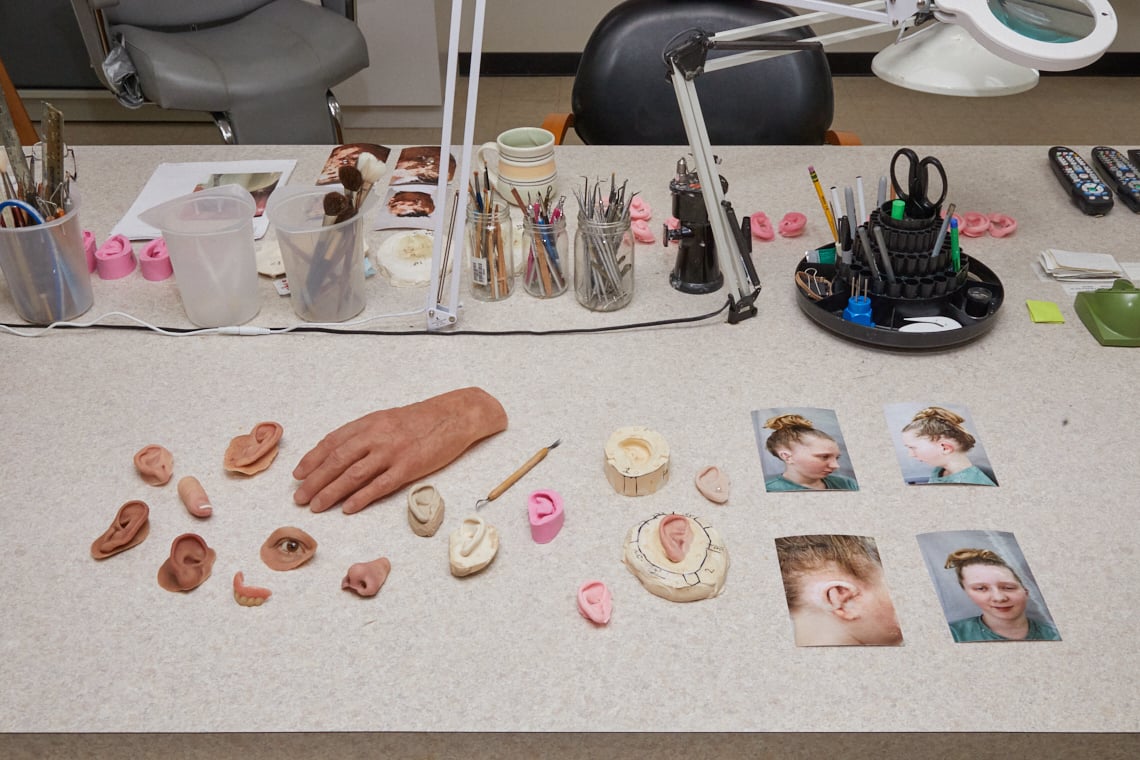
Barron spent the next decade with that revelation in the back of his mind, and when he retired from the CIA in 1993, he decided to open his own prosthetics practice. Now he’s using the skills honed at the Agency to help a steady stream of clients, many of whom arrive in a state of desperation and hopelessness. Barron tells the story of a man named Tim, whose nose was disfigured in a boating accident. The ordeal pushed Tim into a deep depression; he removed all the mirrors in his house and told his girlfriend she should leave him. At one point, he slinked into his bathroom and pressed a revolver to his head. But after Barron attached a custom-made nose—just a small lump of rubber-like material—Tim’s life-threatening depression evaporated and everything changed. Outcomes like that give Barron such satisfaction that, even at age 80, he still sees many clients each year. “How the heck can I retire?” he says.
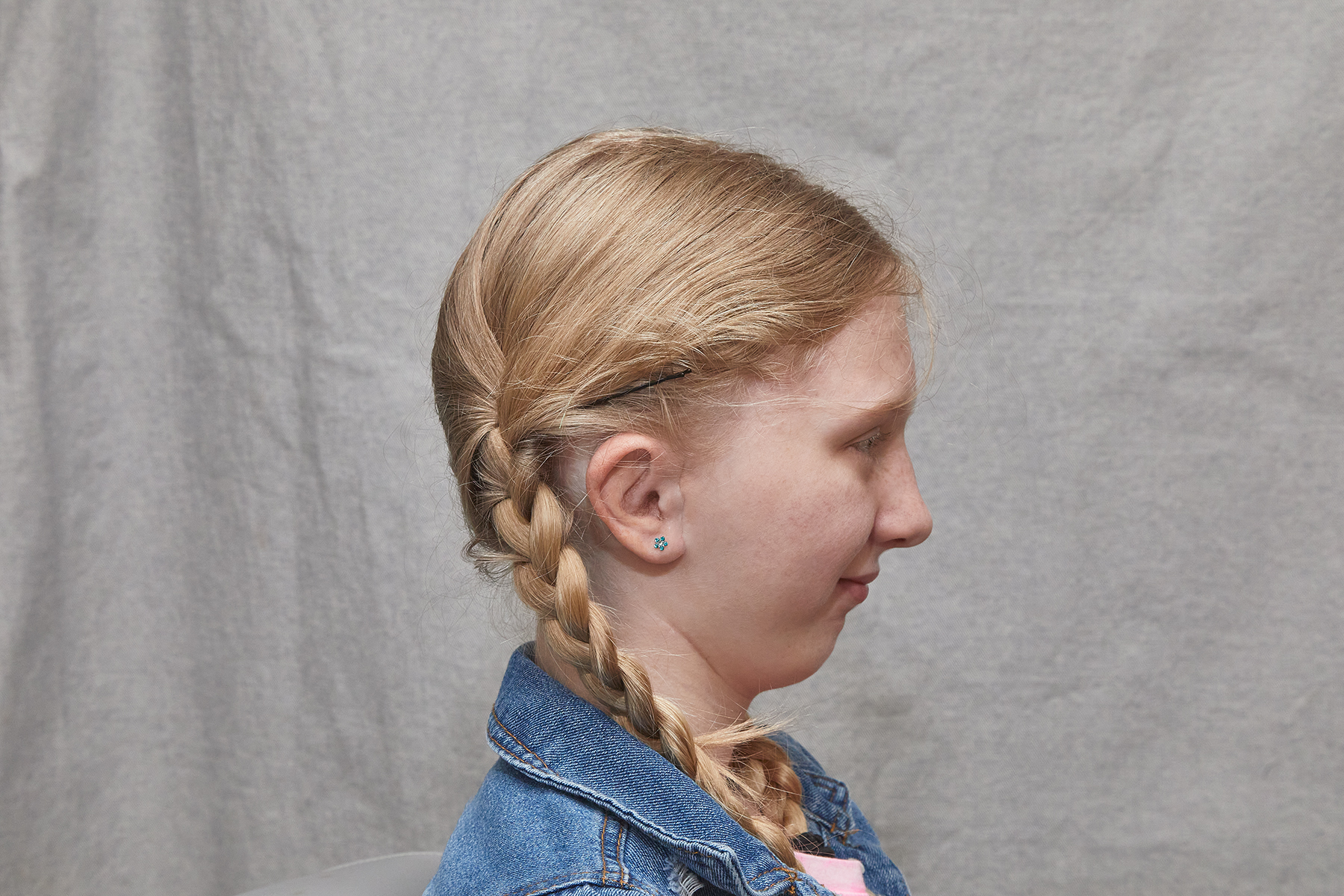
As it turned out, Aubrey was another happy customer. With her new ear attached, she got up from the chair and walked to a mirror. There she was, the same ten-year-old kid as before—only now with a pair of perfectly ordinary ears, complete with the tiny pearl earrings she had wanted. Now, when she went back to her elementary school in Ohio, she’d be able to wear glasses or put her hair in a ponytail. “Oh, my gosh,” she said, throwing her hands over her mouth. Then she whirled around and hugged Barron.
This article appears in the July 2022 issue of Washingtonian.

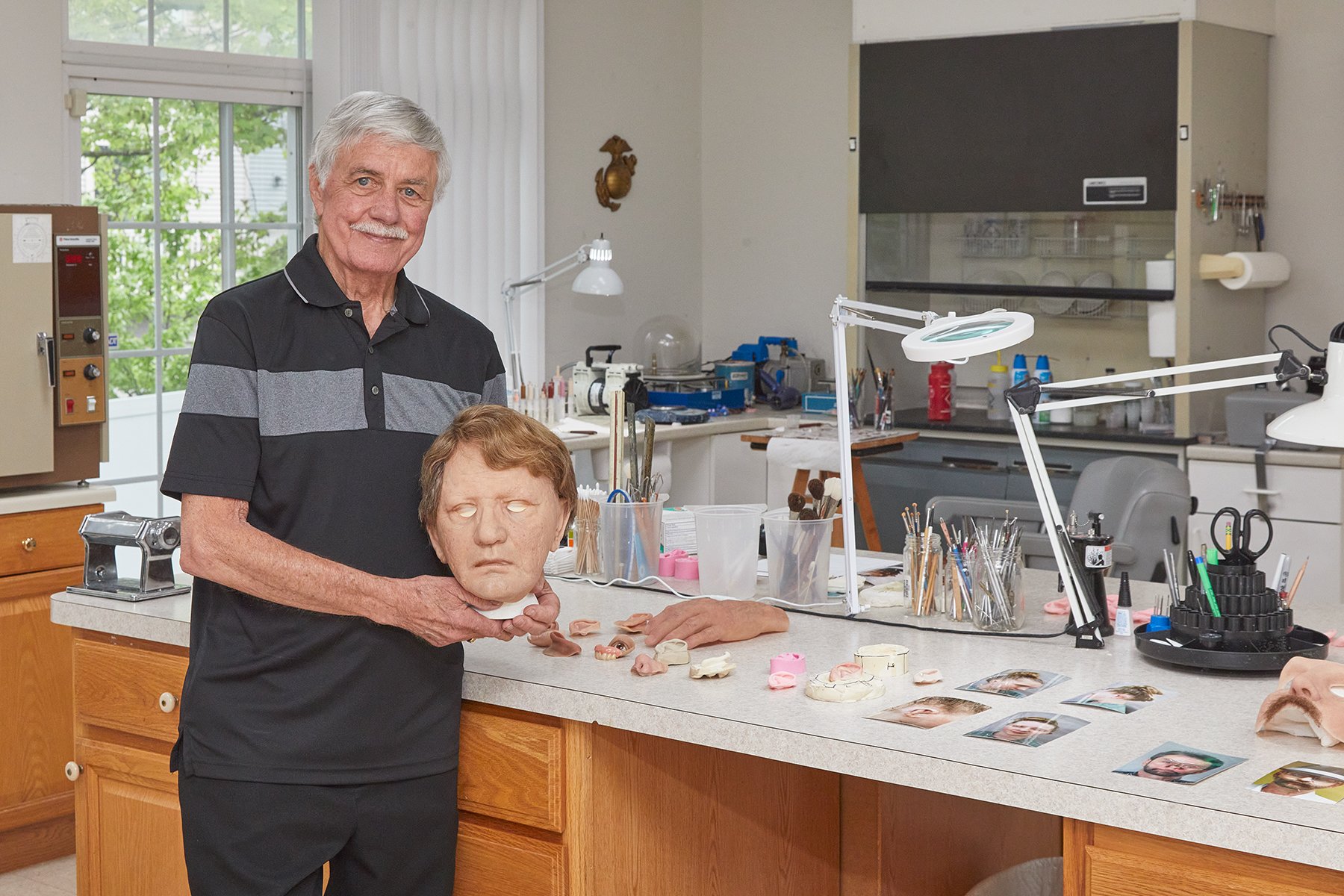
![Luke 008[2]-1 - Washingtonian](https://www.washingtonian.com/wp-content/uploads/2017/10/Luke-0082-1-e1509126354184.jpg)
















